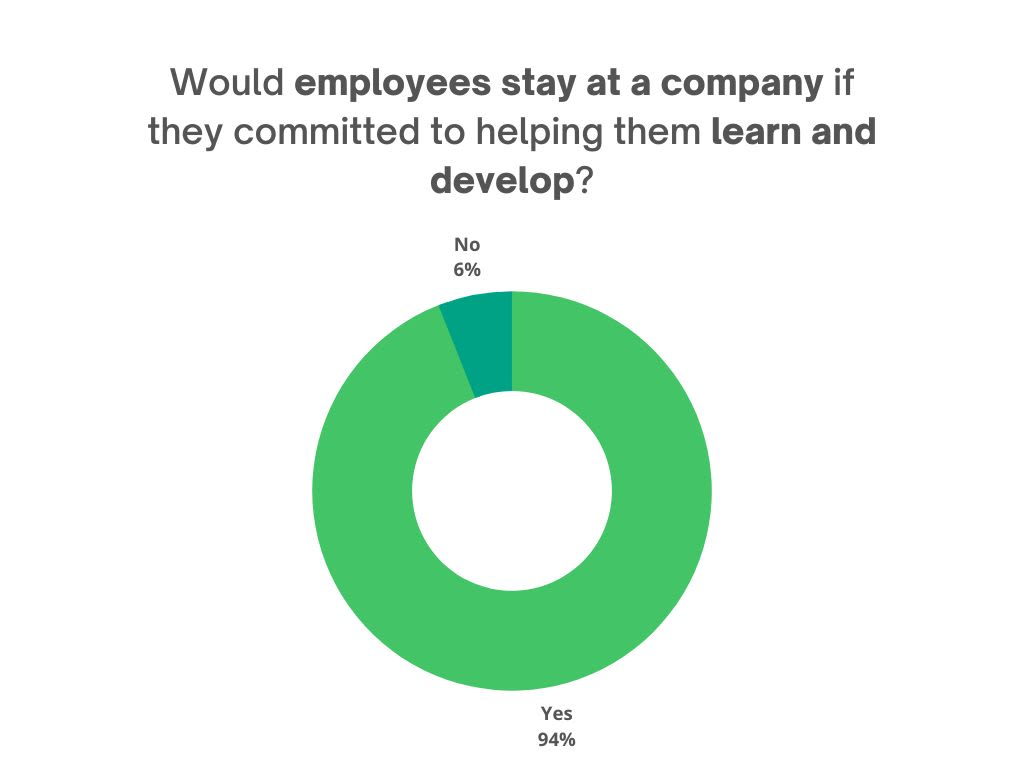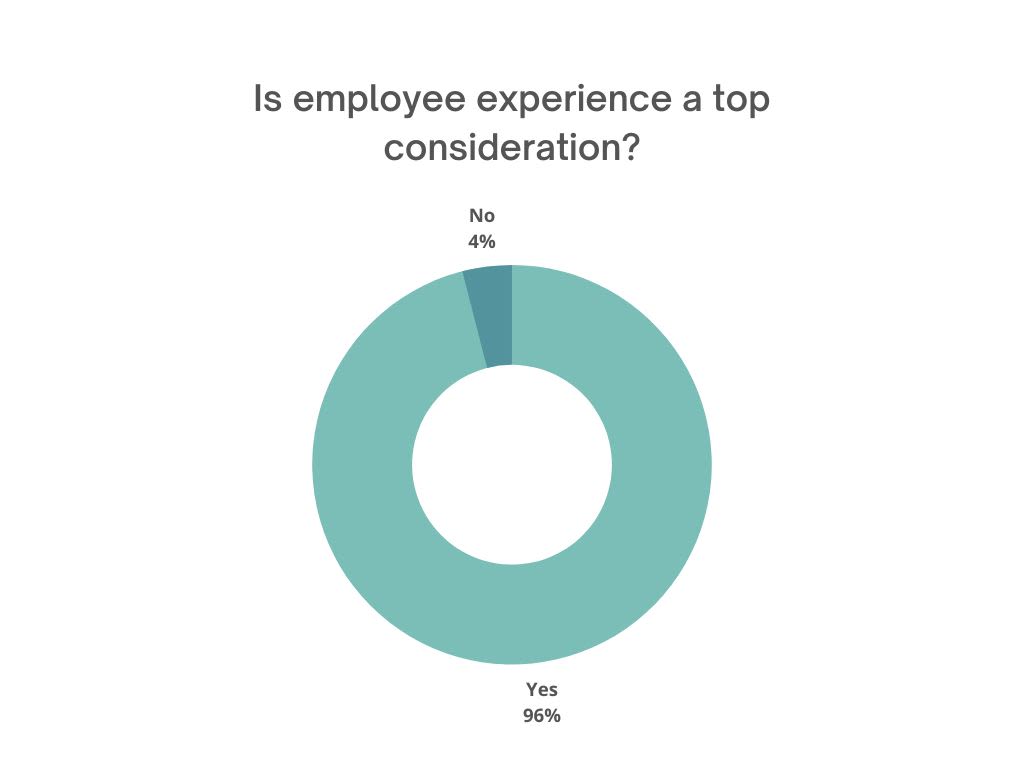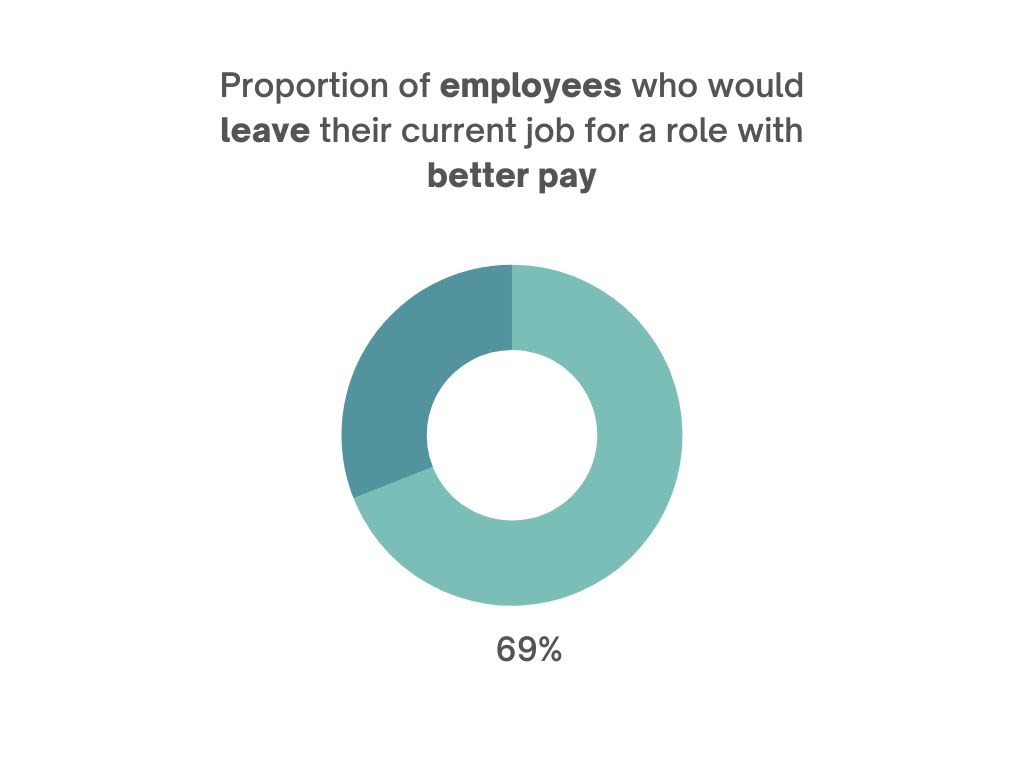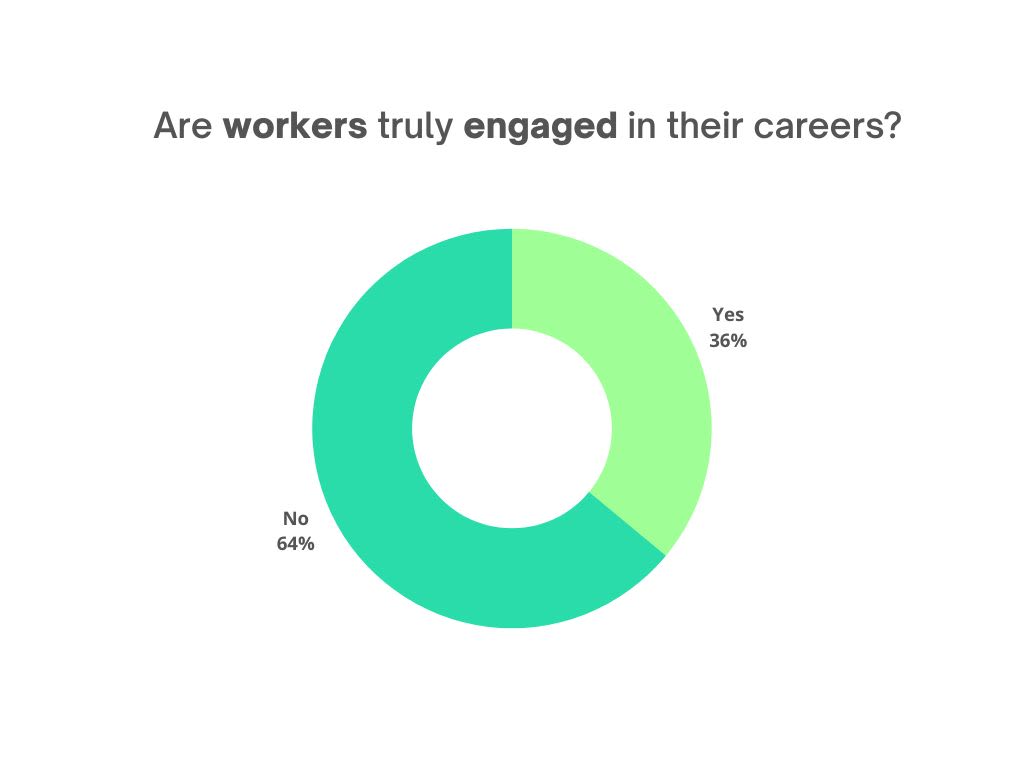
The Turnover Crisis: What's Causing Employees To Quit?
October 18, 2022
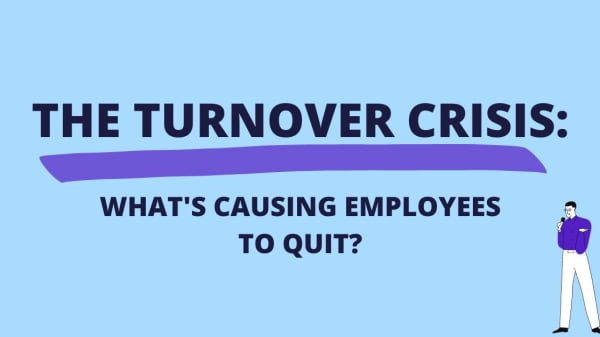
According to the American Bureau of Labor Statistics (BLS), in August 2022 4.2 million Americans quit their jobs. Known as 'The Great Resignation', the turnover crisis is hitting businesses hard post-pandemic, with more employees leaving for better opportunities, a better work/life balance, and better pay.
Employee turnover is the number of employees who leave an organization, usually measured over a specific time period like a year. This includes both voluntary turnover , where the employee has chosen to leave, and involuntary turnover where the employer has made the decision, either through redundancy or through firing.
As a company, you can measure your employee turnover with a simple calculation comparing the amount of employees at the start of the period to the amount afterward, and this is typically displayed as a percentage.
The calculation is:
The number of employees that have left, divided by the number of employees in total multiplied by 100.
For example, if you had 80 employees at the beginning of the month, and 12 people left, the calculation would be 12/80x100=15. This would make your turnover rate 15%.
When calculating, be sure to only include permanent staff who are in role and have left their role; including temporary staff and those that are on temporary leave (i.e. maternity or sick leave) will skew the results.
Turnover rates can be calculated as a whole company, or they can be calculated by looking at specific departments. It can also be tailored to measure the retention of different demographic groupings in the business.
Although a high turnover rate is not ideal, turnover is natural as employees change career direction, move on to have families, or retire - and there are some positives that can come from turnover, such as fresh new ideas from new starters and the chance to develop a different workplace culture.
Different types of businesses will have a different benchmark for the ideal turnover rate - for example, a bar or restaurant might expect higher staff turnover than a bank - but somewhere around 18% is touted as being the right level.
The most common causes of employee turnover
Understanding why employees might be looking elsewhere is the first part of working on better retention - and mitigating the negative effects that a high turnover rate can have.
There are many reasons why employees quit their jobs - and some of them are below.
Job dissatisfaction
An engaged, enthusiastic and committed employee is much less likely to leave, but only 36% of workers are truly engaged in their careers.
Job dissatisfaction can come from feeling disengaged, but it can also come from feeling that their work is meaningless, and 15% of employees have said that they would leave their current employment for more meaningful work. This can come from working in a business that does not have a clear mission, or one that does not actively engage in charity work or with local communities, for example.
Over one-third of disengaged employees are actively looking for new work.
It is clear that a good employee experience in the workplace will help with retention, getting staff more involved in the business and what they are doing - and much of that starts with onboarding.
Given that employees are more likely to leave in the first year - a shocking 64% - retention plans really do need to start right at the very beginning of the employee's career.
Poor fit with the company culture
Company culture can make or break an organization, and it is one of the biggest factors in staff turnover.
It is so important that it does not take long for an employee to recognize a toxic company culture - 28% of people who left a job within the first 90 days reported that it was due to the workplace culture.
The way a workplace operates, from management right through to the employees, can have a really positive impact on performance and engagement, but a toxic culture does the exact opposite.
Employees in a bad culture are more likely to experience burnout, and up to 26% of employees actually say that they dread going to work every day - which shows how disengaged they are with the work that they are doing.
Bad workplace culture can include poor leadership, an expectation to work beyond normal hours, lack of flexibility in terms of time, added workload, lack of recognition - all attributed to managers usually, but there is also the 'banter' and divisive practices that can fracture a workplace and lead to tension and friction that will ultimately demotivate staff and cause them to leave.
Limited opportunities for career progression
Engaged employees want the opportunity to develop and grow in their careers, and this means having training and development with the end result of a promotion.
38% of employees have reported that they would leave their current employment for the opportunity to progress in their career, and the number of people who have actually left for a promotion has increased by 170% in the last ten years.
What this means in practice is that if there is no investment in training and development for employees, and there are no opportunities for progression and promotion, then employees will leave.
This is especially true of millennials in the workplace, where72% state that they place great value on career advancement opportunities when they are looking for a job - so if the workplace does not have a specific career path with extra opportunities, they will be looking elsewhere.
Poor relationships with managers
The saying 'people don't leave bad jobs, they leave bad managers' might be trite, but in some ways it is true.
Poor management can affect company culture, personal relationships, and employee engagement, and 27% of employees stated that they left their current role because they felt undervalued and unappreciated - because of their managers.
Employees who suffer from the bad mood of a manager and feel that they are unapproachable will feel less engaged with the business as a whole, and this is amplified when more and more pressure is being placed on the employee to work more, leading inevitably to burnout.
Low pay
Pay is probably the easiest reason to cite when it comes to employee turnover, and with 69% saying that they would leave for a role with better pay, it is obvious that salary is an important consideration.
However, what is really important to people in work is the total package that is on offer, including perks and benefits. Quite clearly, if an employee does not feel that they are being compensated or offered their worth - whether that is through their annual salary or additional pay like bonuses, or even enough paid time off or a well-padded retirement fund, then they are more likely to leave.
Problems with compensation is the reason that 17% of people have left their job.
The consequences of employee turnover
High employee turnover leads to several problems, some more obvious than others.
Turnover is expensive. According to the SHRM, it costs between 6-9 months of the position's salary to replace an employee. Filling a job role costs in terms of money and time, and meanwhile there is a hole in the team that needs to be filled. Existing employees may be asked to step up and cover the jobs that need doing, which places extra stress on them, increasing the risk of burnout.
Of course, even when a new staff member has been hired (expensively), they will not be as productive as the experienced member of staff that they have replaced. Loss of staff means loss of productivity, and this can lead to problems with quality of products or services, losing customers and causing a wave of profit margin issues.
Losing staff, especially through preventable causes like poor pay, lack of growth opportunities and disengagement can also affect the morale of the remaining employees. Whether they are being forced to work more or work harder to make up for the shortfall in staffing or they need to take time out to help train a new employee, resentment can build and lead to a domino effect where more and more people start leaving.
How can businesses reduce employee turnover?
Find the right talent initially
Reducing employee turnover starts with recruitment, and with the right hiring process.
The job description used should be accurate and relevant to the position - only 36% of candidates report that they were given an accurate job description.
There should be adequate pre-employment assessments used, specifically those that are relevant to the role, to ensure that the candidates have the required skills and aptitudes to be successful. There should be a detailed interview structure that delves into the job knowledge and suitability of the candidate before hiring.
Through a specific and considered recruitment process, employers can ensure that they are hiring candidates who are engaged, motivated and capable.
Onboarding
A clear, structured and thorough onboarding process leads to better retention. Staff who are onboarded well are much more likely to stay in the role, and they will feel more connected to the job they have been hired to do and the team they are working with.
69% of employees are more likely to stay after a positive onboarding experience, and it doesn't take much to make these improvements - little things like ensuring log-in details are ready before they start, introducing them around the building, and consistent check-ins to make sure that they have everything they need and feel like they are getting to grips with the role.
Getting the onboarding experience right will make employees more engaged, and more productive much quicker.
Improved company culture
Getting the culture right is so important, as it feeds into engagement, recognition, satisfaction and productivity.
Culture starts from the executives and the managers, and employee engagement leads to better relationships and positive experiences. This is something that is becoming increasingly important, as 96% of talent professionals said that employee experience was a top consideration.
Part of this is also looking at creating a mission or purpose for the business, investing in charity work and helping local communities - this helps employees feel that their work is more meaningful, and recognition schemes positively affect the way that 68% of employees feel about their job.
Pay and benefits
Although not the top reason for leaving, ensuring that the total compensation package offered by your company is at least in line with the industry average is important. This means not only the annual salary, but the pension, paid time off, and flexible working arrangements too.
Dissatisfaction with pay can come from perceived disparity within the workplace too - resentment can build if an employee feels that they are undervalued for the work they do in comparison with someone else in the same position.
Pay parity is not just about the gender pay gap, but making sure that there is a pay structure that is adhered to so that everyone is paid according to their skills and experience within a specific pay range.
Career Development
Companies with better training lose 53% less employees, and 94% of employees said that they would stay at a company if they demonstrated a commitment to helping them learn and develop.
Millennials in particular are more drawn to staying in a role where career development is available, and this can be built on by providing specific career paths that demonstrate what milestones need to be reached for a career to grow.
Growth and development means investing in employees, which helps them feel more engaged.
Better management
Only 10% of managers actually have a talent for managing people, which means that hiring strategies need to consider leadership qualities and how best to nurture those people that are suited for a management role.
Managers need to be approachable and understanding, willing to do the work alongside other employees, and able to give recognition where it is deserved. Managers are considered to be responsible for toxic company culture, but they can also make a difference and make employees feel valued.
Managers who are leaders that recognize talent, reward good work, and get to know their staff with regular check-ins foster a more engaged and motivated culture which is great for staff retention.
Boost your hiring power.
Start using Neuroworx today.
Talk is cheap. We offer a 7-day free trial so you can see our platform for yourselves.
Try for free
